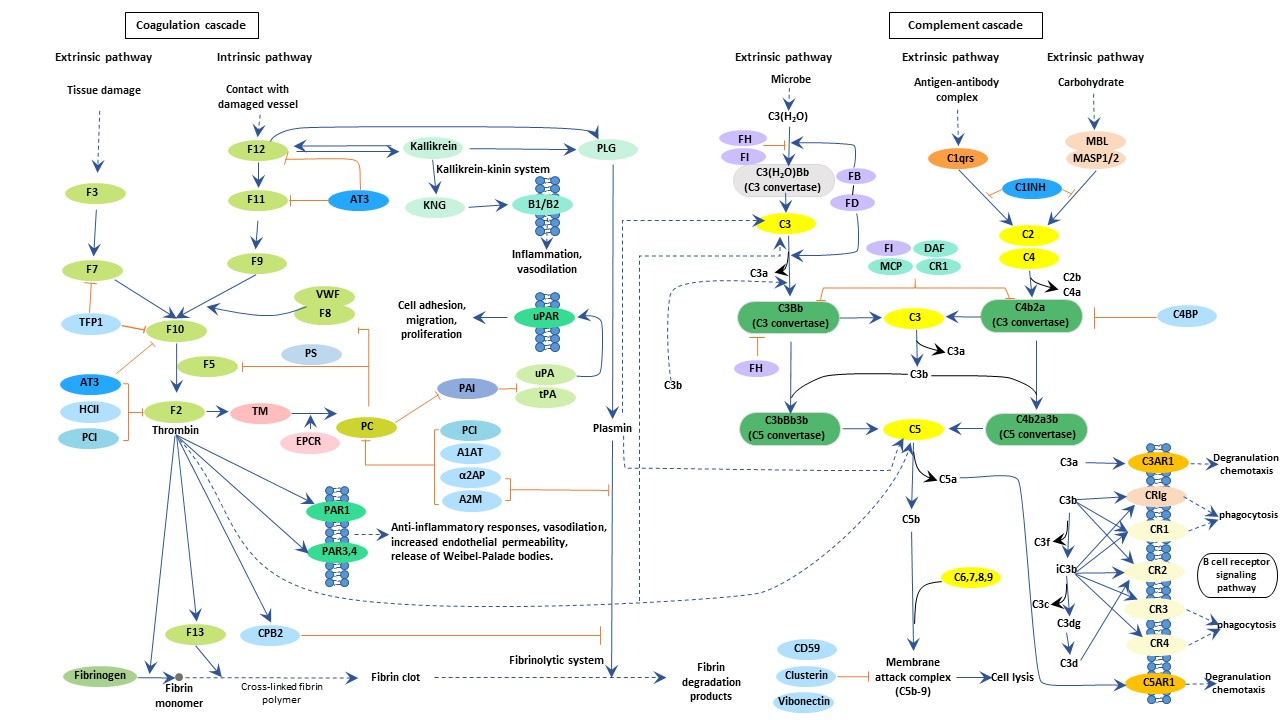
What is Complement cascade?
The complement system is a part of the immune system that enhances (complements) the ability of antibodies and phagocytic cells to clear microbes and damaged cells from an organism, promotes inflammation, and attacks the pathogen's cell membrane. Complement cascade is a proteolytic cascade in blood plasma that is activated by the presence of pathogens.
The Pathways of Complement Activation
There are three pathways of complement activation: the classical pathway, the lectin pathway, and the alternative pathway. The main consequences of complement activation are the opsonization of pathogens, the recruitment of inflammatory and immunocompetent cells, and the direct killing of pathogens.
What is Coagulation?
Blood coagulation, also known as coagulation, is a series of coordinated and calcium-dependent proenzyme-to-serine protease conversions, culminating in the formation of thrombin, the enzyme responsible for the conversion of soluble fibrinogen to the insoluble fibrin clot. Protease-activated receptors, such as those activated by thrombin, are members of G protein-coupled receptors and function as a mediator of innate immunity.
The kallikrein-kinin system is an endogenous metabolic cascade, triggering of which results in the release of vasoactive kinins (bradykinin-related peptides). Kinin peptides are implicated in many physiological and pathological processes, involving the regulation of blood pressure and sodium homeostasis, inflammatory processes, and the cardio-protective effects of preconditioning.
The Crosstalk Between Complement cascade and Coagulation
As shown in the following figure, thrombin and plasmin directly cleave complement component C3, as well as its activation fragments. Moreover, thrombin can cleave C5 into C5a, which occurs independently of C3 and therefore represents a bypass of the three traditional complement-activation pathways (that is, the classical, lectin and alternative pathways).
The convergence between complement and the clotting system extends far beyond the chemical nature of the complement and coagulation components, both of which form proteolytic cascades. Complement effectors directly enhance coagulation.



